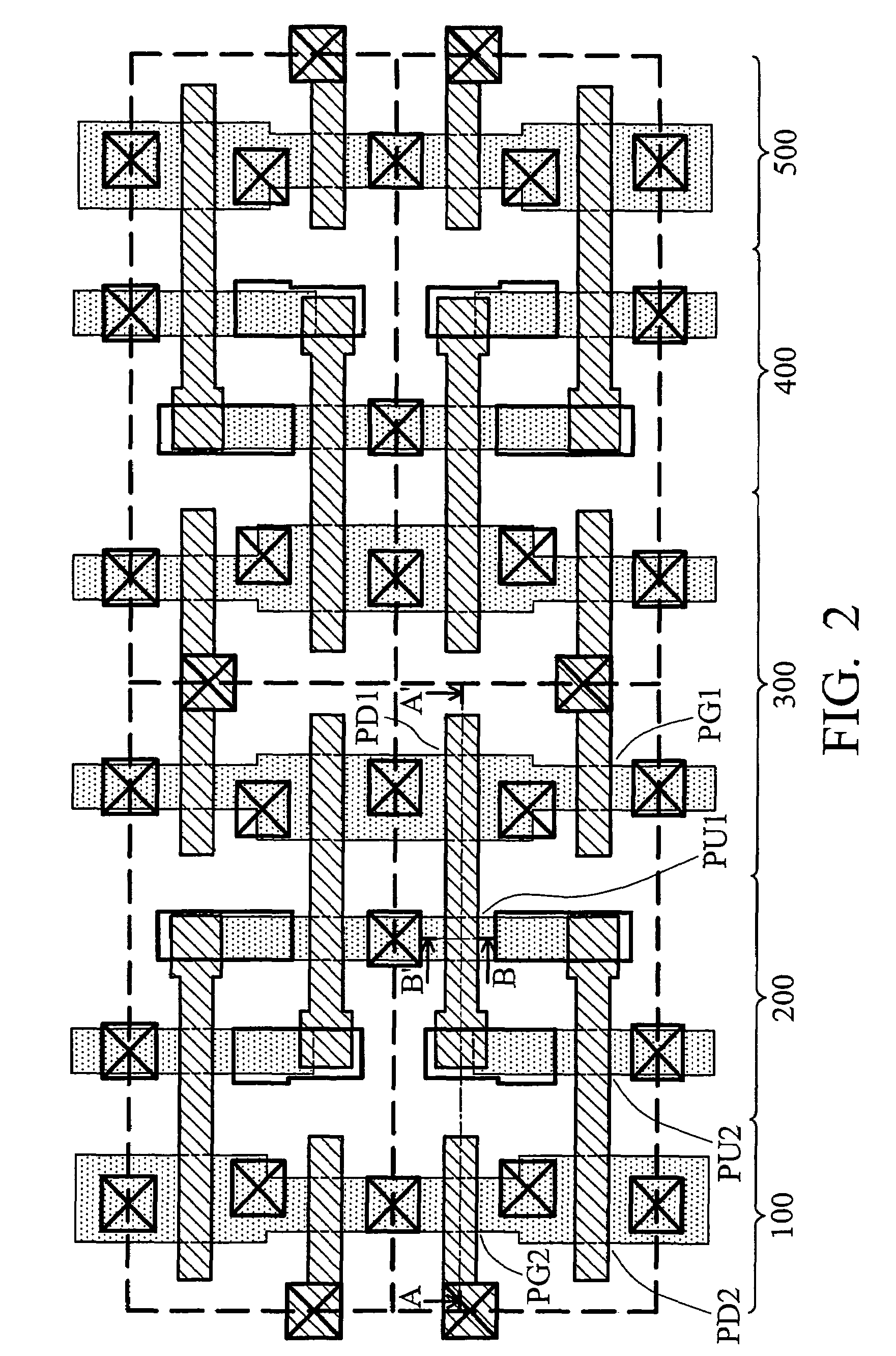Partial FinFET memory cell
a memory cell and finfet technology, applied in the field of memory cells, can solve the problems of affecting the drive current of pull-down nmos devices, affecting the performance of pmos and nmos devices, and affecting so as to achieve more balanced pmos and nmos performance, and improve the performance of memory cells
- Summary
- Abstract
- Description
- Claims
- Application Information
AI Technical Summary
Benefits of technology
Problems solved by technology
Method used
Image
Examples
Embodiment Construction
[0020]The making and using of the presently preferred embodiments are discussed in detail below. It should be appreciated, however, that the present invention provides many applicable inventive concepts that can be embodied in a wide variety of specific contexts. The specific embodiments discussed are merely illustrative of specific ways to make and use the invention, and do not limit the scope of the invention.
[0021]FIG. 2 illustrates an exemplary layout of an embodiment of the present invention. Four six-transistor (6T) unit memory cells are formed, each being inside a region defined by dotted lines. The layout illustrates p-well regions 100, 300 and 500, which are for forming n-type metal-oxide-semiconductor (MOS) devices, and n-well regions 200 and 400, which are for forming p-type MOS devices. For simplicity, in the subsequent illustrated drawings, only the unit memory cell at left bottom corner of FIG. 2 is discussed.
[0022]In the illustrated exemplary layout, each unit memory ...
PUM
 Login to View More
Login to View More Abstract
Description
Claims
Application Information
 Login to View More
Login to View More - R&D
- Intellectual Property
- Life Sciences
- Materials
- Tech Scout
- Unparalleled Data Quality
- Higher Quality Content
- 60% Fewer Hallucinations
Browse by: Latest US Patents, China's latest patents, Technical Efficacy Thesaurus, Application Domain, Technology Topic, Popular Technical Reports.
© 2025 PatSnap. All rights reserved.Legal|Privacy policy|Modern Slavery Act Transparency Statement|Sitemap|About US| Contact US: help@patsnap.com



